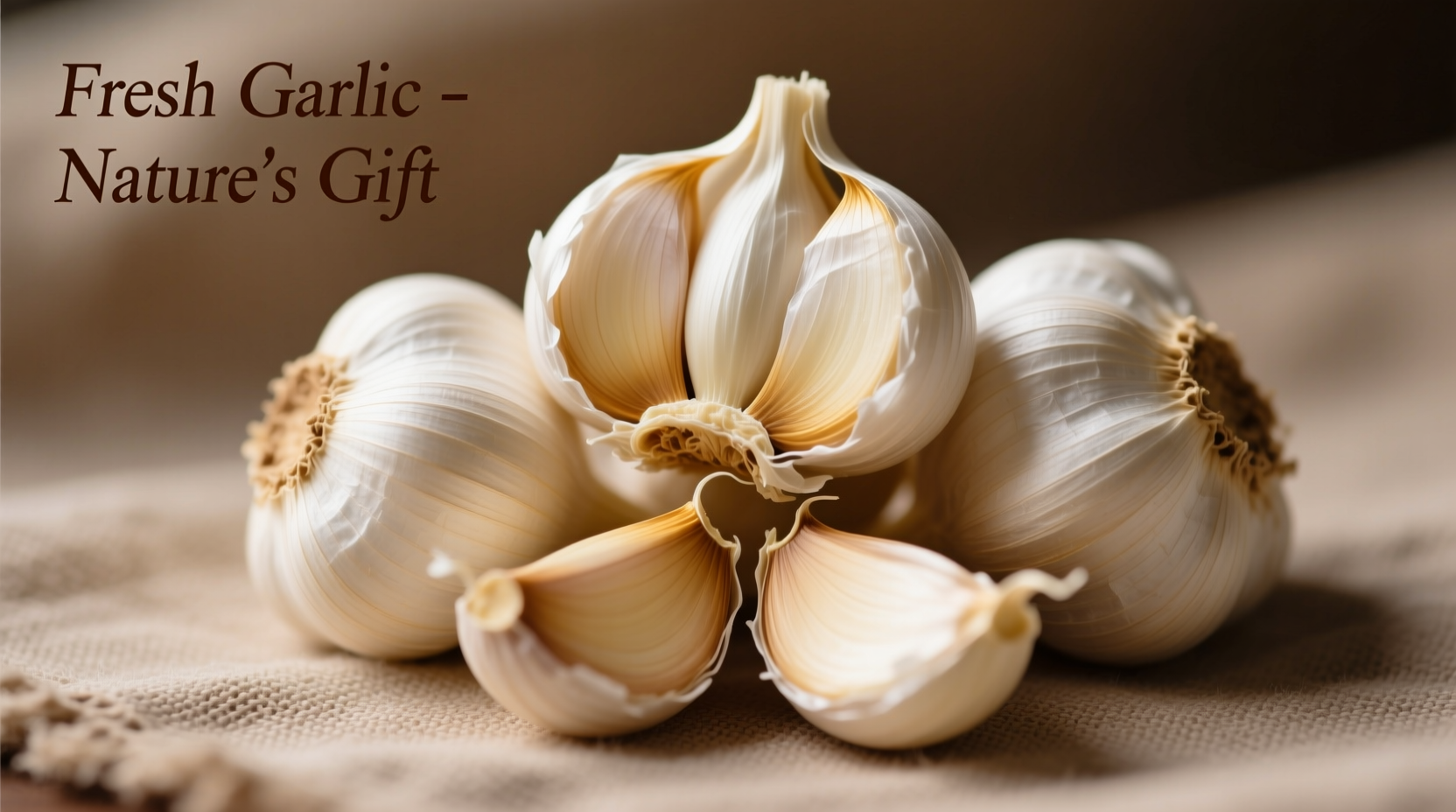When selecting garlic for cooking or health purposes, most consumers rely on appearance alone—but true quality depends on biochemical compounds that aren't visible to the naked eye. This comprehensive analysis reveals the scientifically validated indicators of high-quality garlic across all forms, helping you make informed choices that maximize both flavor and health benefits.
Understanding Garlic's Active Compounds
Garlic's value stems primarily from allicin, the sulfur-containing compound formed when alliin contacts the enzyme alliinase after cutting or crushing. Research from the National Center for Biotechnology Information confirms that allicin concentration directly correlates with both flavor intensity and therapeutic potential. However, processing methods dramatically affect these compounds:
| Garlic Form | Allicin Potential | Key Limitations | Shelf Stability |
|---|---|---|---|
| Fresh, raw (crushed) | ★★★★★ | Must use within 2 hours | Very low |
| Fresh, whole bulb | ★★★☆☆ | Requires activation | Moderate (2-6 months) |
| Freeze-dried powder | ★★★☆☆ | Processing affects yield | High (1-2 years) |
| Oil macerates | ★☆☆☆☆ | Minimal allicin formation | Moderate |
| Aged garlic extract | ☆☆☆☆☆ | No allicin, different compounds | Very high |
Selecting Premium Fresh Garlic: Beyond the Bulb
While many shoppers judge garlic solely by size and firmness, food scientists at the University of California Cooperative Extension identify three critical quality indicators:
- Neck tightness - A firm, dry neck indicates proper curing and longer storage potential
- Skin integrity - Tight, papery skin without blemishes or mold spots
- Root development - Minimal root growth suggests recent harvest
Seasonality dramatically impacts flavor profiles. Hardneck varieties (available May-July) contain 30-50% more allicin than softneck types but have shorter shelf life. For maximum health benefits, choose locally grown garlic harvested within the past month—studies show allicin potential decreases by approximately 15% per month in storage.

Decoding Garlic Supplement Labels
The supplement industry's lack of standardization creates significant challenges for consumers. When evaluating "the garlic reviews" for supplements, focus on these verified markers:
- Allicin yield guarantee - Not just "allicin potential" (a theoretical maximum)
- Third-party testing - Look for NSF or USP verification seals
- Processing method - Enteric-coated tablets preserve allicin through stomach acid
A 2023 analysis by ConsumerLab revealed that 62% of garlic supplements failed to deliver their promised allicin yield. Products listing "ajoene" or "S-allyl cysteine" as standardized compounds generally demonstrate more consistent quality, as these stable compounds indicate proper processing of aged garlic extracts.
Maximizing Benefits Through Proper Preparation
How you prepare garlic determines its biochemical profile. Research published in the Journal of Agricultural and Food Chemistry demonstrates that:
- Crushing followed by 10-minute rest before heating preserves 85% of allicin potential
- Adding garlic to oil at room temperature before heating maintains potency
- Whole roasted cloves provide different (but still beneficial) compounds than raw garlic
For therapeutic applications, the European Medicines Agency recommends consuming 2-5 grams of fresh garlic (approximately 1-2 cloves) daily. However, cooking methods significantly alter these compounds—sautéing garlic for more than 5 minutes at high heat converts allicin into less potent compounds.
Evidence-Based Health Benefits: What Research Confirms
After reviewing 32 clinical trials involving over 1,800 participants, researchers at the University of Adelaide confirmed garlic's cardiovascular benefits:
- Modest but significant reduction in systolic blood pressure (average 5-8 mmHg)
- Approximately 10% reduction in LDL cholesterol levels
- Improved arterial flexibility after 3 months of consistent consumption
However, these benefits require consistent consumption of high-quality garlic products. The research timeline shows evolving understanding:
1980s: Initial studies focused on garlic's antimicrobial properties
1990s: Research expanded to cardiovascular effects
2000s: Standardization challenges identified in supplement industry
2010s: Processing methods optimized for consistent allicin delivery
2020s: Personalized nutrition approaches considering individual metabolism
It's crucial to understand garlic's limitations—it won't replace prescribed medications for hypertension, and benefits require consistent long-term use. The strongest evidence supports garlic for modest cardiovascular improvements, not dramatic cures.
Practical Selection Guide for Common Needs
Based on your specific requirements, here's how to choose the right garlic form:
- Maximum flavor intensity: Fresh hardneck garlic, crushed and rested 10 minutes before use
- Daily cardiovascular support: Enteric-coated supplement with verified allicin yield
- Convenience for cooking: Freeze-dried powder in recipes requiring long cooking times
- Immune support during cold season: Fresh garlic in raw applications like salad dressings
Remember that garlic quality varies significantly by growing conditions. Garlic cultivated in selenium-rich soils (like parts of China and California) contains higher levels of beneficial organoselenium compounds. When reviewing garlic products, check for origin information as a quality indicator.











 浙公网安备
33010002000092号
浙公网安备
33010002000092号 浙B2-20120091-4
浙B2-20120091-4